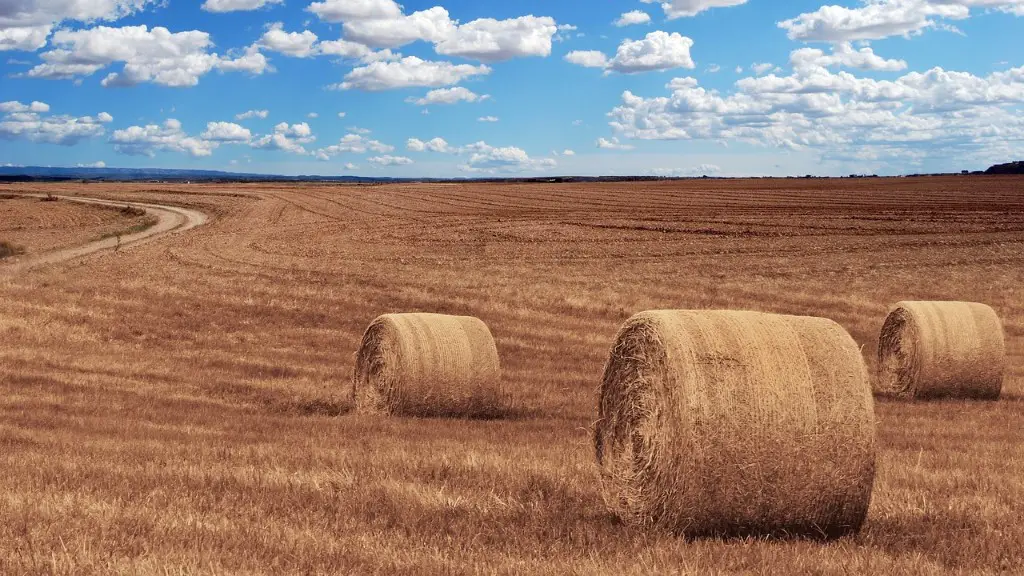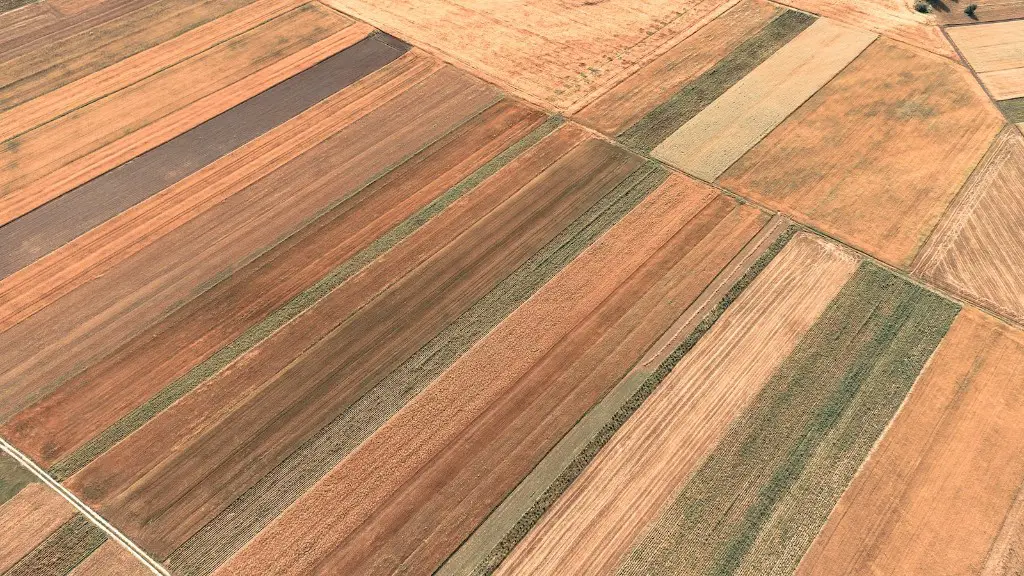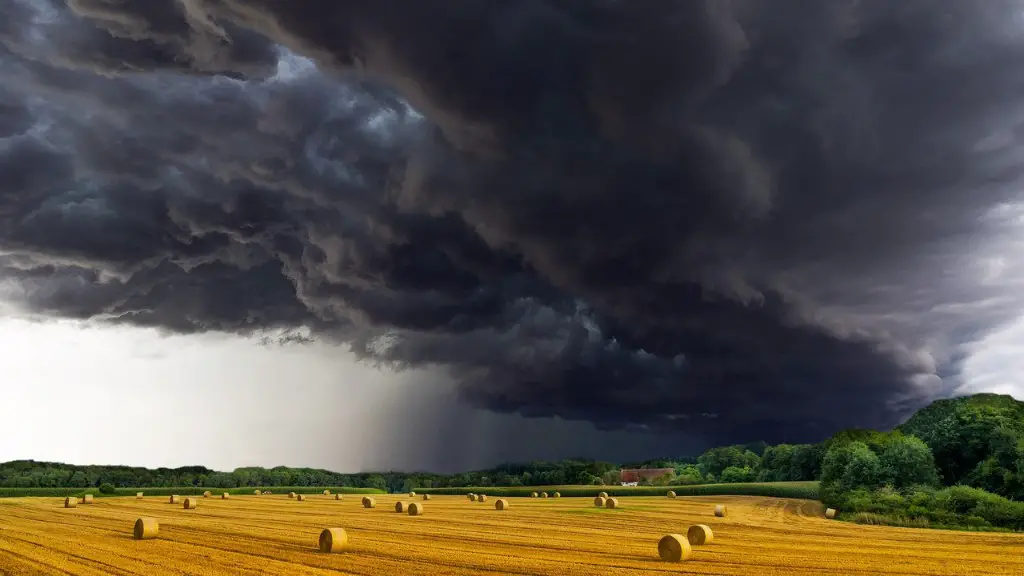Water is a vital element for the development of vegetable production and the overall health of agricultural ecosystems. Unfortunately, with the growing pressure of global human population and the changing climate, water availability is becoming increasingly limited. As a result, water scarcity is causing tremendous pressure on domestic and global agricultural production. In this article, we discuss the various ways in which water shortage affects agriculture and its consequences.
To begin with, water scarcity can lead to reduced crop yields due to the lack of water to support healthy crop growth. For example, moisture-stressed crops are more vulnerable to pests, diseases and weeds, making it more difficult for farmers to manage their land and yield satisfactory results. Moreover, water stress can reduce photosynthesis rate, impacting the quality and quantity of crop yields. Additionally, water shortages can cause crop damage due to the lack of adequate moisture in the atmosphere or soil, leading to decreased crop quality or worse, failure of the crop.
Apart from the direct consequences of reduced yields or crop damage, water shortages can also have indirect effects on agriculture. For example, in arid or semi-arid areas, the limited availability of water can create soil degradation, resulting in decreased soil fertility, depletion of nutrients and reduced crop yields. In addition, as water availability decreases, farmers may be forced to abandon traditional agricultural practices and use more water intensive methods, leading to over-exploitation of ground water resources and an overall decrease in water availability for future generations.
In addition to the direct and indirect consequences of water shortage, it can also lead to additional environmental problems, such as deforestation and soil erosion. Deforestation results in decreased water infiltration, which can reduce the water availability for vegetative growth, as well as higher surface temperatures and evaporation rates. Similarly, soil erosion caused by water scarcity can lead to sedimentation, soil compaction and reduced water infiltration, negatively affecting crop yields. Furthermore, increased soil salinity due to water shortages can degrade the soil structure and, potentially, the overall environment.
Finally, water shortages can also have an economic impact on the agricultural sector. Water scarcity can lead to higher production costs, due to expensive irrigation systems and water scarcity management methods. Moreover, as crop yields decrease and the availability of water becomes increasingly scarce, prices of agricultural commodities can also rise, leading to economic losses for farmers and other agricultural stakeholders.
Impact on Animal Husbandry and Aquaculture
Water scarcity can also have a significant impact on animal husbandry and aquaculture. A lack of water availability can cause the health of livestock to deteriorate, due to lack of proper hygiene, shortages of fresh water and insufficient exercise. This, in turn, can lead to decreased milk and meat production, higher morbidity and mortality rates and a net decrease in agricultural output. Moreover, in the area of aquaculture, a decrease in available water, as well as aquatic pollution, can significantly impact the health of fish farms and the overall quality of their products.
Impacts on Land and Infrastructure
Furthermore, water shortages can also have an impact on land resources and infrastructure. As water becomes increasingly scarce, developed land, such as those used for irrigation systems, may have to be removed or abandoned. In addition, tunnels and reservoirs used to capture and store water may have to be modified or replaced as water becomes scarce. This, in turn, can have huge economic consequences, particularly in areas where water management infrastructure is already established.
Socioeconomic Impacts
Moreover, water scarcity can also have a number of socioeconomic impacts, due to its central role in people’s livelihoods and overall quality of life. In particular, it can lead to unemployment in rural areas, as well as increased poverty, due to the reduced crop yields and prices. In addition, it can lead to decreased access to clean drinking water, as water resources become increasingly scarce. Given these social, economic and environmental consequences, it is clear that water scarcity can have a significant impact on agriculture.
Technological Solutions
Given the immense effects of water scarcity on agriculture, it is important for farmers and agricultural communities to consider technological solutions to this problem. For example, innovative irrigation systems, such as drip irrigation and sprinkler systems, can be used to conserve water, while still ensuring adequate water availability for crop growth. Similarly, water harvesting methods such as rainwater collection and grey water reuse can be employed to reduce water demand and increase the available water resources. Furthermore, precision agriculture can help to reduce water wastage, while ensuring adequate water availability for crops. By embracing these technological solutions, agricultural communities can begin to mitigate the impacts of water scarcity on their agricultural activities.
Climate Adaptation
Finally, effective water management and climate adaptation can also help to reduce the impacts of water scarcity on agriculture. By understanding the impacts of climate change, including the increase in temperature, river and stream flow alterations, etc., farmers can create strategies to better manage water resources. Moreover, effective collaboration between government, industry and farmers can help to develop intelligent water resource management policies, while also exploring ways to reduce water wastage. These strategies, combined with technological solutions and climate adaptation, can help to reduce the impacts of water scarcity on agriculture.


